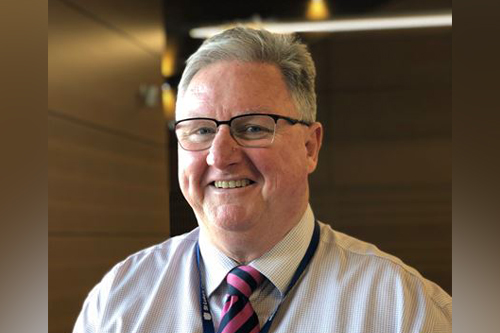
For a senior year student, leaving school and embarking on their next step is a daunting prospect if they don’t know what that next step is.
As a result, many young men and women either find themselves drifting from one unfulfilling job to the next, or not working at all.
While there are systems in place to help students find and harness their passion, they don’t always translate into tangible results. While the reasons for this vary from program to program, an important factor is that schools often lack the right industry connections and/or resources to see their noble goal through to the end.
St Luke’s Catholic College in Sydney is employing the use of Life Coaches from Innerzone to work with teachers, and in doing so, help students unlock their potential by answering three important questions: ‘Who am I?’ ‘What are my strengths?’ and ‘What problems can I solve?’.
Through the program, which launched in 2017, students from Year 7 to 10 have learned how to unpack their strengths, interests and motivators (SIM) and discover their talents through purposeful passion projects with the intention of making life better for others.
By the end of Year 8 each student articulates a draft life purpose statement. Some examples are:
- “To use innovative technology to assist in the creation of projects that will enhance the way we live in the future."
- "To communicate and connect with individuals so that I have a positive impact on their mental, physical, emotional and social health."
- "To bring justice to all communities so that they may live in an environment that is liveable where everyone is treated equally."
Below, The Educator speaks to St Luke's Marsden Park principal, Greg Miller, to find out more about these programs and how they’re transforming teaching and learning at the school.
TE: Can you run us through the thinking of your leadership team in 2017 before the launch of the Life Design program? (what was the catalyst?)
GM: With a commitment to design and establish a ‘new normal’ for a preschool to post school setting where we combine the five educational services early learning, primary, secondary, out of hours care, and a high needs studio, the thinking of the staff at the time was to bring to prominence the social skills and enterprise skills required for a changing world. Expressed as our 6 Pillars of Learning, they align with the ACARA General Capabilities required for changing and now VUCA world.
This approach to teach, assess and track the growth of each child’s capabilities over time, builds upon the non-negotiable foundations of literacy and numeracy development for each student. As time has evolved, so too has our commitment for students to engage with our 6 Pillars of Learning, they being the ability to Witness, Manage, Relate, Inquire, Think and Create. Our engagement with ‘best practice’ literacy and numeracy approaches along with a ‘next practice’ focus on capabilities has resulted in our ‘new normal’ approach which supports our vision to nurture curious children to become creative contributors and innovative problem solvers for a changing world.
TE: What have been some of the most powerful outcomes you’ve seen from the Life Design program in action, and how has this informed the program’s development?
GM: The ability of students to develop their draft Life Purpose statement has informed Year 9 Life Design. Throughout this year, Year 9 students engage with problems and challenges in their localised world whilst reflecting on their 'purpose'. Furthermore, they will complete learning modules about Sustainability, Entrepreneurship, Financial Literacy and Digital Footprint, whilst updating their online folios which showcase the very best of who they are, what they can do and what problems they want to solve. This serves as a very important reminder of how each one of our Year 9 students, like every single one of our students, and like every human being throughout the world, is 'uniquely built' and ‘made differently’.
The evolution of Life Design over the last three years has prompted questions about what the senior years of schooling look like at St Luke's. In 2021, Year 10 Life Design will see students engage with new Learning Modules such as 'Work Preparation'. As well as this they will continue to reflect on their purpose by engaging with their ‘Passion Projects’, occasionally with community and business partners.
Knowing all of the above, we cannot help but look further towards 2022 and 2023 for Year 11 and 12 students. We know that we will be offering the Higher School Certificate (HSC) which, for those who choose, will also ensure they attain an ATAR to assist with post school university options. As part of the Australian Qualifications Framework, a Diploma assists students to access university degree courses. There are students in other Catholic Education Diocese of Parramatta (CEDP) schools engaged in a diploma course of study and Open University subjects. These same students can leave school and, in some cases, go straight into a second year university course.
TE: COVID-19 was certainly a curveball for schools everywhere. How do you believe the pandemic is impacting on the important goal of preparing young people for the future?
GM: COVID-19 has accelerated our understanding of how locally and globally connected we are. There is an emerging body of knowledge which suggests successful people in the coming decades need to be able to understand this interrelatedness and navigate intercultural understanding and ethical understanding in working with people across the globe. Furthermore, our greatest learning is that young people in the future will be required to better manage their time and their technology to communicate, collaborate and create as they develop the empathy and emotional intelligence to work with teams across cultures.


